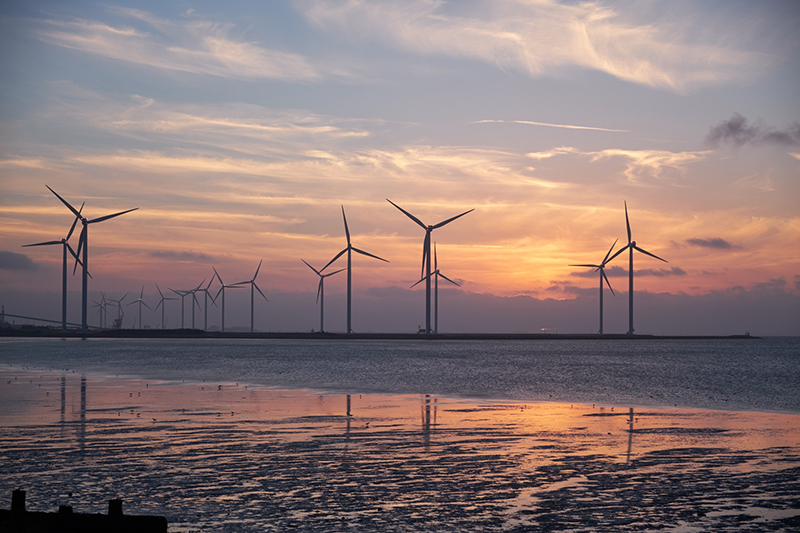Click here to get this post in PDF

Hydroelectricity is probably one of the most used energy source in the entire world. Water has great importance in human life either it is from point of human health or from the point of facilities and services.
Electricity has become a basic human need. The whole world would stop if the electricity is cut for some time. We use electricity for different purposes like lighting, cooking, bathing, operating different machines, travelling, communicating and many more.
But, have you ever thought, how electricity is produced? What is the mechanism of its production? We can produce electricity from different sources like Water, Wind, Thermal, Solar and Nuclear. Among these all, Water is one of the most used source to produce electricity. According to the International Energy Agency (IEA), Hydroelectricity covers 17% of total electricity production in the entire world.
The mechanism and engineering behind the production of electricity from water is very innovative and amazing. The techniques used in it are simple yet appealing. We are using water from years. The first hydroelectricity project built in world was Fox River in Appleton, Wisconsin on Sept 30, 1882.
Since then, the use of natural flowing water was extensively used to produce electricity. There are different countries with different having different potential to produce electricity. The countries like Nepal having natural fast-flowing river from the Himalayas has amazing possibility of producing electricity. That country who lacks the naturally fast-flowing rivers needs extra work to make water flowing fast.
In this article, we are going to learn how the electricity is produced from water and the entire system works.
Let’s get started…
What is Hydroelectricity?
Hydroelectricity is an energy which is obtained from water by converting its kinetic energy into mechanical energy and finally to electrical energy. It is a part of engineering.
Use of different kinds of machines like Turbines and Generator has made it possible to convert the falling energy of water into electrical energy. Water from lakes, ponds and oceans evaporate and become clouds. Later these clouds precipitate in form of rain. This rain causes the formation of fast-flowing rivers which is used to produce electricity.
Thus, Electricity we are using is the power of water. Isn’t it interesting? Well! The water is of course helping us in many different ways to keep us alive and making our life way easier and comfortable.
Ways Of Producing Hydroelectricity
Basically, there are 3 different ways that are used to produce electricity from water. These are explained below:-
✓Flowing River
This is the easiest way of producing electricity from water. In this system, the Power of naturally flowing water is used to produce electricity.
✓Storage System
In this system, flowing water is stored in the reservoir by making dams. This water is released as required to produce electricity. This type of storage system is not needed if the topography supports the production of electricity.
✓Pumped-Storage System
This is an expensive system. In this system, water is pumped using different energies to higher elevation and again it is set to fall from a height to create more kinetic energy which is used to produce electricity. This is not effective as the energy needed to pump water to the height is more than the electric energy produced from that amount of water.
Looking for the best electrician in Australia, then call your local electricians in the Eastern Suburbs.
Components And Working Of Hydroelectricity
1. Dam
This is the main requirement to produce electricity. The dam is generally made at higher altitude where a large amount of water is stored. There is a system to control the flow of water. The water from the dam flows at high speed to the turbine.
2. Turbine
The water falling from height has a good amount of kinetic energy. The force of water when passed through the turbine rotating its blades. Then, kinetic energy is converted into mechanical energy.
3. Generator
The blades of the turbine are connected to the generator. When the turbine rotates with the force of water, it causes the rotation of the generator. This generator converts mechanical energy into electrical energy.
4. Transmission Lines
Transmission lines are used to distribute the produced electricity from the production point to the national grid. The electricity produced from different power plants is combined at one point which is later distributed all around the country with the help of different local grids.
Factors Affecting The Amount Of Electricity
There are two factors which are directly related to the amount of produced electricity. These are:-
- Height / Elevation
Height refers to the distance from the turbine to the point from which the water is falling. This distance is directly proportional to the kinetic energy of water. As kinetic energy i.e., energy in motion depends upon the vertical distance, More the distance more the K.E and K.E is directly related to the rotation of the turbine. The more the K.E, the higher the number of rotations and the higher the amount of electricity produced.
- Volume Of water
It also affects the amount of electricity produced. The amount of water passing through the turbine per time determines the rotation which ultimately changes the amount of electricity produced. Thus, the more the water volume, the more will be the electricity produced. Make sure to contact professionals for all your electrical work around the inner west or wherever your region may be.
Final Verdict
Thus- This is the whole mechanism of the production of electricity. The process is very complicated and there is a need for much-skilled manpower. Many electricians are working day and night to provide us with light. Therefore, we shouldn’t waste electric energy and we should be very aware of the preservation of water resources as it is the ultimate source of life and light.
You may also like: What is Solar Energy?
Image Source: Pexels.com
